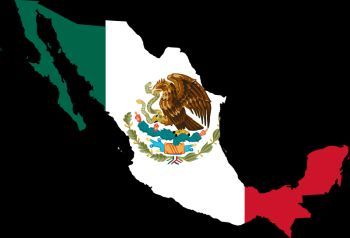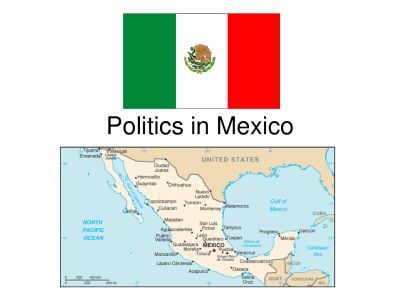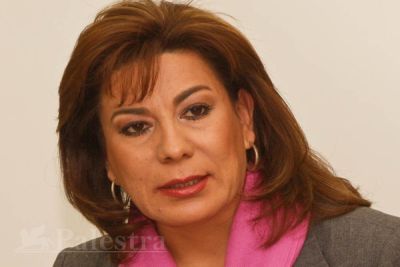
Publisher:
Bonnie King
CONTACT:
Newsroom@Salem-news.com
Advertising:
Adsales@Salem-news.com

~Truth~
~Justice~
~Peace~
TJP
Mar-08-2012 10:38

 TweetFollow @OregonNews
TweetFollow @OregonNews
Women in Mexican Politics
Kent Paterson for Salem-News.com“I wanted Zihuatanejo to have many schools, students and electricity” - Dona Cari
 Courtesy: foreignexchangeservice.co.uk |
(LAS CRUCES, NM) - Editor’s Note: In the 20th century and the first years of the 21st, women made a big mark in the public life of Mexico. Whether as educators, entertainers, entrepreneurs, activists or athletes, women have been an indispensable part of the national story. Journalists like Lydia Cacho and Carmen Aristegui became important interpreters of the national reality, while activists like human rights campaigner Rosario Ibarra de Piedra and Esther Chavez Cano, the late Ciudad Juarez women’s rights defender, stood out as voices challenging injustice and gender inequality. An increasing number of women have chosen the political path as their role in society. In commemoration of March 8, International Women’s Day, the following article takes a look at Mexican women and politics.
When Caritina Galeana Gomez was born, women did not have the right to vote and the Institutional Revolutionary Party (PRI) that dominated Mexico for much of the 20th century wasn’t even created. Born only a few weeks before the outbreak of the Mexican Revolution in 1910, Dona Cari, as she is known locally, grew up in the Costa Grande of Guerrero state before a highway existed and fancy tourist resorts attracted people from all over the world.

“There were no hotels or electricity,” Dona Cari recalled in a recent interview with Frontera NorteSur. “There was a lot of fish, a lot of oysters…palm trees, coconuts,” the 101-year-old resident of Zihuatanejo said.
The daughter of a hacienda manager and a stay-at-home mom, Dona Cari ventured out into the world as an educator, helping found a school in the village of San Luis de la Loma and teaching a new generation the three Rs as a reform-minded Mexican government embarked on a literacy crusade.
Along with other teachers, Dona Cari got involved in politics. Working on different campaigns, they greeted candidates who arrived by boat to an isolated region of the country. Then in 1953, the feisty docent became one of the pioneering women politicians in Mexico when she was elected as a Zihuatanejo city council representative for the PRI.
With the assistance of her young aide Sarita, Dona Cari remembered the early days of Zihuatanejo’s local government, a time when the population was small and services far and few between.
“I wanted Zihuatanejo to have many schools, students and electricity,” she said. But Dona Cari did not always have an easy time. Sometimes the men made political life difficult, she said, forcing the new city councilor to stand up for herself and the right of women to participate in decision-making as equals.
 |

“I dedicated all my strength and my will to forge ahead,” Dona Cari said. “I defended myself, because every once in a while they would attack me…they threatened me, but I countered that I could do the same thing.”
A lot has changed since Dona Cari clashed with males who thought they knew better, and a lot hasn’t. While men still greatly outnumber women in the key political decision-making positions, women have gradually deepened their presence and impact in the political sphere during the last century.
“Similar to what happened years before in Europe and the U.S, the first demonstrations in favor of gender equity in Mexico were led by upper and middle class women, generally writers, journalists and founders of feminist magazines…,” wrote Gladis Torres Ruiz in a 2007 article published by the Mexico City-based Cimac women’s news service.
In the political ferment that led up to the 1910 Revolution, writers Juana Belen and Elisa Acuna participated in an organization associated with the revolutionary Flores Magon brothers. In 1904, a group of women including Columbia Rivera, Maria Sandoval de Zarco and Dolores Correa Zapata founded the magazine Mexican Women.
From 1916 to 1922, women in the southern states of Chiapas, Tabasco and Yucatan achieved the right to vote and hold some elected offices. A 1947 political reform gave women the right to be elected to municipal offices nationwide. Six years later, in 1953, Mexican women were granted universal suffrage and permitted to serve in the federal congress.
In 1958, Maria del Carmen Martin del Campo was elected the mayor of the central Mexican city of Aguascalientes, an important rail hub of the republic at the time. “From then on, little by little, some women from Aguascalientes have come to occupy federal as well as local offices,” wrote in an essay Dr. Eva Teran Fuentes, an Aguascalientes researcher who studies the history of women in politics.
 Lorena Martinez of the PRI |
Aguascalientes’ current mayor, Lorena Martinez of the PRI, was elected to office in 2010 with more than 55 percent of the vote. In 1999-2000, a woman, Rosario Robles, served as the interim mayor of Mexico City.
Women have also made runs for the top elected office in the land. Prior to 2012, presidential candidates included Rosario Ibarra de Piedra (1982, 1988), Marcela Lombardo (1994), Cecilia Soto (1994) and Patricia Mercado (2006).
Nowadays, women’s political participation is readily visible in political parties, candidacies, campaign organizations and electoral monitoring efforts.
A young graduate of the national university in Mexico City, Eloisa Juarez began 2012 working as the women’s coordinator for the mayoral primary campaign of Jorge Allec Maciel in Zihuatanejo. In a speech to thousands of supporters last month, Allec drew heavy applause when he called for respecting the rights of women, curbing violence and attacking discrimination.
According to Juarez, women’s committees in the coastal town’s working-class neighborhoods actively promoted the campaign and advanced proposals for policy changes. “There is a latent need for inexpensive day care,” Juarez underscored. Women have been hard hit by the economic crisis and tourism decline, with unemployment especially among older women emerging as a big problem in recent years, she added.
 |
“If there are no jobs for young people, much less are there ones for older people,” Juarez said in an interview with Frontera NorteSur. For those who do have jobs, very low pay in the $80-$120 range every two weeks is the norm, Juarez said. To survive, many women are selling catalog products to their neighbors or seeking to organize coops for producing hammocks and value-added coconut products, she said.
“The capacity of women to overcome in the economy and with the family never ceases to amaze me,” Juarez said, adding that women’s persistence reaffirms her identity. “Women have many, many desires and many projects. All they need is a little push up.”
In 2012, women’s participation in politics is in the spotlight in large part because of the presidential candidacy of the PAN’s Josefina Vazquez Mota and, to a lesser extent, the candidacy of anti-crime activist Isabel Miranda for Mexico City mayor, a job considered the second most-powerful political position in the land. Miranda also represents the center-right PAN.
Unlike the earlier presidential candidacies of women, Vazquez Mota is given a good shot at capturing Los Pinos, the Mexican White House, in 2012.
“ I will win like Michele Bachelet did in Chile,” Vazquez Mota told an interviewer on CNN. “Like it was done in Costa Rica, Argentina and Brazil.”
The 51-year-old conservative hopeful served in both the Fox administration and the outgoing Calderon government first as social development secretary and then later as secretary of education. Some analysts, however, contend that Vazquez Mota will have to distance herself from Calderon’s policies in order to win. Otherwise, “her only destiny is defeat,” predicted columnist Humberto Musacchio.
Women are involved in the political process through the Federal Electoral Institute (IFE), the national citizens’ organization that is organizing this year’s presidential and congressional elections. David Alejandro Delgado, president of the IFE’s Guerrero state council, said the national council has had a policy of gender equity since 2006. In Guerrero this year, the policy meant marathon sessions to debate and implement local formulas of gender equity, Delgado told Frontera NorteSur.
Guerrero’s state Council consists of four women and two other men in addition to Delgado. The women represented on the state body include well-known feminist Maria Luisa Garfias, actress Maria Magdalena Steiner, indigenous activist Reyna Ortiz Montealegre and anthropologist Irma Maribel Nicasio.
In addition to the state council, the IFE has district councils at the local level dedicated to organizing and overseeing the elections. Of 54 Guerrero district councilors, 30 are women and 24 men, while the sex ratio is exactly the reverse for the 54 substitute councilors, according to Delgado.
Gender equity is an issue of ongoing internal polemics within the nation’s political parties. Federal electoral reforms in 2002 and 2007 mandated that the political parties reserve between 30 and 40 percent of their congressional candidacies for women. By 2005, as many 20 states had approved different gender quotas for state or municipal elected offices, according to a report by the National Women’s Institute.
In practice, however, compliance with gender equity has been very uneven.
At the municipal level, for instance, women’s representation still lags far behind their majority share of the population. Federal legislator Florentina Rosario Morales told the Guerrero daily El Sur that just 4.9 percent of 81 municipalities in the southern state had female mayors. Nationally, only 96 of 2,439 municipalities are headed by women, Morales said. “At this juncture, we need to position committed women with an agenda that seeks the empowerment of women,” Morales was quoted.
Last month, hundreds of left-leaning women gathered in Mexico City to demand that the four political organizations making up the Progressive Movement which is fielding Andres Manuel Lopez Obrador for president adhere to the principle of equity and stop engaging in “simulations.” According to the Proceso news agency, the demand was supported by former Zacatecas Governor Amalia Garcia of the PRD party and Senator Yeidokol Polevensky.
Back in Zihuatanejo, Dona Cari maintained that she still had an eye on politics and would scrutinize the local candidates so she could support “the best ones for Zihuatanejo.” Gazing at her beloved bay, Dona Cari said today’s young women should follow her example by studying hard, becoming professionals and plunging into the thick of the struggle.
“It has to be done,” Dona Cari affirmed. “We all can do it.”
-Kent Paterson
Frontera NorteSur: on-line, U.S.-Mexico border news
Center for Latin American and Border Studies
New Mexico State University
Las Cruces, New Mexico
 |
 |
 |
Articles for March 7, 2012 | Articles for March 8, 2012 | Articles for March 9, 2012



Quick Links
DINING
Willamette UniversityGoudy Commons Cafe
Dine on the Queen
Willamette Queen Sternwheeler
MUST SEE SALEM
Oregon Capitol ToursCapitol History Gateway
Willamette River Ride
Willamette Queen Sternwheeler
Historic Home Tours:
Deepwood Museum
The Bush House
Gaiety Hollow Garden
AUCTIONS - APPRAISALS
Auction Masters & AppraisalsCONSTRUCTION SERVICES
Roofing and ContractingSheridan, Ore.
ONLINE SHOPPING
Special Occasion DressesAdvertise with Salem-News
Contact:AdSales@Salem-News.com

Terms of Service | Privacy Policy
All comments and messages are approved by people and self promotional links or unacceptable comments are denied.
[Return to Top]
©2025 Salem-News.com. All opinions expressed in this article are those of the author and do not necessarily reflect those of Salem-News.com.